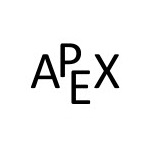2.4.1: Ejercicios 2.4
- Page ID
- 114020
Términos y Conceptos
Ejercicio\(\PageIndex{1}\)
¿Por qué los cambios en el interior de la función producen cambios horizontales?
- Contestar
-
Las respuestas variarán, pero deben incluir la idea de que los cambios en el interior son cambios en las entradas, que están en el eje horizontal.
Ejercicio\(\PageIndex{2}\)
¿Por qué los cambios en el exterior de la función producen cambios verticales?
- Contestar
-
Las respuestas variarán, pero deben incluir la idea de que aplicar cambios en el exterior de la función afecta a las salidas, que son los valores y (altura de la gráfica).
Ejercicio\(\PageIndex{3}\)
Al graficar la función\(g(x)=2 \ln{(x)} + 4\), which transformation should you apply first?
- Contestar
-
El estiramiento vertical
Ejercicio\(\PageIndex{4}\)
Al graficar la función\(f(x)=(2x-1)^3\), which transformation should you apply first?
- Contestar
-
El desplazamiento horizontal
Ejercicio\(\PageIndex{5}\)
Al graficar la función\(h(t)=3^{t+4}\), what is the base function and how is it being transformed?
- Contestar
-
La función base es\(3^t\) and it is being shifted 4 units to the left
Problemas
Graficar cada una de las funciones en ejercicios\(\PageIndex{6}\) -\(\PageIndex{10}\).
Ejercicio\(\PageIndex{6}\)
\(f(x)=-x^2+1\)
- Contestar
-
Ejercicio\(\PageIndex{7}\)
\(f(x) = \left\{\begin{array}{cc} 2x+8 & x \leq -1 \\ -x+7 & x>-1 \end{array}\right.\)
- Contestar
-
Ejercicio\(\PageIndex{8}\)
\(f(x) = \left\{\begin{array}{cc} -x^2 & x < 0 \\ (x-1)^2 & 0 \leq x <3 \end{array}\right.\)
- Contestar
-
Ejercicio\(\PageIndex{9}\)
\(f(x) = e^x+1\)
- Contestar
-
Ejercicio\(\PageIndex{10}\)
\(f(x) = \left\{\begin{array}{cc} \sin{(x)} & x < \pi \\ \cos{(x)} & x> \pi \end{array}\right.\)
- Contestar
-
En ejercicios\(\PageIndex{11}\) -\(\PageIndex{15}\), grafica y escribe una ecuación para cada una de las funciones descritas.
Ejercicio\(\PageIndex{11}\)
El resultado del cambio\(g(x)=x^2\) up three units and to the left two units
- Contestar
-
\(h(x)=(x+2)^2+3\)
Ejercicio\(\PageIndex{12}\)
Cualquier polinomio de grado par que sea positivo para\(-2 \leq x \leq 4\).
- Contestar
-
Las respuestas variarán, pero un ejemplo es
\(h(x)=x^2+1\)
Ejercicio\(\PageIndex{13}\)
El resultado del cambio\(f(\theta) = -2\theta +3\) down two units and right 5 units.
- Contestar
-
\(g(\theta) = -2(\theta-5) + 3 -2=-2\theta + 11\)
Ejercicio\(\PageIndex{14}\)
La función por tramos que consiste en\(t^2\), shifted down one unit for \(t \leq -2\) and of the line with a slope of 3 and a y-intercept of 3 for \(t>-2\).
- Contestar
-
Agrega textos aquí. No borre primero este texto.
\(f(t) = \left\{\begin{array}{cc} t^2-1 & t \leq 2 \\ 3t+3 & -2<x \end{array}\right.\)
Ejercicio\(\PageIndex{15}\)
La línea con una pendiente de\(\frac{2}{3}\) that passes through the point \((1,f(2))\), where \(f(x)=x^2-1\).
- Contestar
-
\(y-3 = \frac{2}{3} (x-1)\), or \(y=\frac{2}{3} x + \frac{7}{3}\)
En ejercicios\(\PageIndex{16}\) -\(\PageIndex{18}\), factorizar la función dada, y graficar la función.
Ejercicio\(\PageIndex{16}\)
\(b(x)=x^3+6x^2+12x+8\)
- Contestar
-
\(b(x)=(x+2)^3\);
Ejercicio\(\PageIndex{17}\)
\(y(t) = t^2-6t+9\)
- Contestar
-
\(y(t)=(t-3)^2\);
Ejercicio\(\PageIndex{18}\)
\(f(x) = x^2+4x+4\)
- Contestar
-
\(f(x)=(x+2)^2\);
Para cada uno de
- \(f(x)=x^{2}-3x,\)
- \(\eta(\theta )=\cos(\theta ),\)y
- \(g(w)=3^{w}-w^{3},\)
escribir la ecuación para la nueva función que resulta de la (s) transofración (es) establecida (s) en ejercicios\(\PageIndex{19}\) -\(\PageIndex{24}\).
Ejercicio\(\PageIndex{19}\)
Agrega texto de ejercicios aquí.
- Contestar
-
Shift up 3 unidades
\(x^2-3x+3\);
\(\cos{(\theta)} + 3\);
\(3^w - w^3 + 3\)
Ejercicio\(\PageIndex{20}\)
Desplazamiento derecho 2 unidades
- Contestar
-
\((x-2)^2-3(x-2)\);
\(\cos{(\theta-2)}\);
\(3^{w-2} - (w-2)^3\)
Ejercicio\(\PageIndex{21}\)
Cambio hacia abajo 2 unidades y izquierda 1 unidad
- Contestar
-
\((x+1)^2-3(x+1) -2\);
\(\cos{(\theta+1)} -2\);
\(3^{w+1} - (w+1)^3 -2\)
Ejercicio\(\PageIndex{22}\)
Desplazamiento hacia abajo\(\pi\) units and right \(e\) units
- Contestar
-
\((x-e)^2-3(x-e) - \pi\);
\(\cos{(\theta-e)} - \pi\);
\(3^{w-e} - (w-e)^3 - \pi\)
Ejercicio\(\PageIndex{23}\)
Voltear a través del eje x
- Contestar
-
\((-x)^2-3(-x)\);
\(\cos{(-\theta)}\);
\(3^{-w} - (-w)^3\)
Ejercicio\(\PageIndex{24}\)
Voltear a través del eje y
- Contestar
-
\(-(x^2-3x)\);
\(-\cos{(\theta)}\);
\(-(3^{-w} - w^3)\)
Responda a cada pregunta en ejercicios\(\PageIndex{25}\) -\(\PageIndex{26}\) usando las gráficas proporcionadas.
Ejercicio\(\PageIndex{25}\)
Con base en la forma de la gráfica que\(f(x)\) se muestra, a continuación,
- podría\(f(x)\) ser un polinomio parejo? ¿Por qué o por qué no?
- podría\(f(x)\) ser un polinomio extraño? ¿Por qué o por qué no?
- podría\(f(x)\) ser una función exponencial? ¿Por qué o por qué no?
- podría\(f(x)\) ser una función trigonométrica? ¿Por qué o por qué no?
- Contestar
-
- no; no es simétrico alrededor del eje y
- sí; tiene simetría rotacional
- no; no tiene asíntota horizontal
- no; no tiene un patrón periódico (repetitivo)
Ejercicio\(\PageIndex{26}\)
Con base en la forma de la gráfica que\(g(x)\) se muestra, a continuación,
- podría\(g(x)\) ser un polinomio parejo? ¿Por qué o por qué no?
- podría\(g(x)\) ser un polinomio extraño? ¿Por qué o por qué no?
- podría\(g(x)\) ser una función exponencial? ¿Por qué o por qué no?
- podría\(g(x)\) ser una función trigonométrica? ¿Por qué o por qué no?
- Contestar
-
- no; no es simétrico alrededor del eje y
- no; no tiene simetría rotacional
- sí; no tiene una asíntota horizontal en un lado y crece sin atadura en el otro
- no; no tiene un patrón periódico (repetitivo)


